Not a Nintendo. Not a Switch. Not a SteamDeck.
It's something else.
Back in February 2022 Valve released the SteamDeck. A device that took PC gaming and made it accessible to the handheld crowd. Prior to this, the standard approach to getting PC gaming handheld was streaming typically on a mobile phone. This often involved an on-screen controller (yuk!), some form of dedicated mobile add-on controller or a bracket to mount your phone to a standard Xbox or PlayStation controller.
I myself went down the Xbox controller + bracket path. It's a solution that works well with thick phone cases which is something that dedicated mobile phone controllers arranged in a "Switch" layout often struggle with. Using an xbox controller also offered me a top-tier controller that fit well with my hand (I often struggle with controllers feeling too small and cramping my hands). Unfortunately this solution also offered me shitty ergonomics with the phone making the controller feel top-heavy and off balance. This solution also meant I had a complex monstrosity that was a real pain to take anywhere. 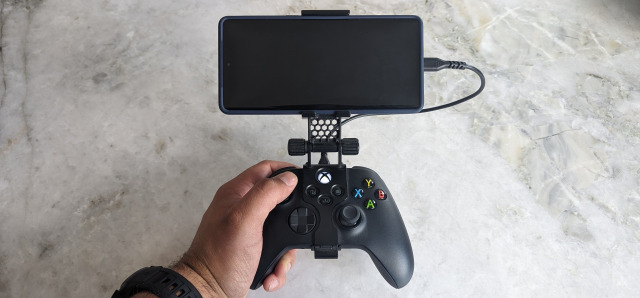
Of course any frustrations with the controller ignore the fact that streaming to mobile itself is highly problematic:
- In transit with spotty or no reception? Nope!
- PC decides to pull down a Windows update? Nope!
- Forgot to turn your PC on first? Nope!
- Traveling far from home so latency is high, even if you have an amazing Internet connection? Nope!
- Forget far from home. Sitting in your backyard with the typical high latency of a mobile network to contend with? Nope!
Nope, nope, nope, nope. You may be getting the sense that yes streaming has its place, but is often problematic. This was my exact experience, it was a workable solution for some scenarios, but generally it was problematic to the point that I never really wanted to use it and often didn't enjoy it when I did. Trying to game like this always felt forced and un-enjoyable. I also had to do too much pre-planning / pre-thinking, not great when most spare time I have typically comes in small pockets of 5-15 mins here and there.
So again, we travel back to February 2022 and Valve releases the SteamDeck, seemingly it's the answer to my prayers. A whole gaming PC in the form factor of a Nintendo Switch. Except it's not available in Australia and at the time of this writing still isn't unless you go for a grey market import.
Will anyone fill this void?
In gaming terms, a new challenger approaches.
That challenger is Ayaneo. They've been at it making handheld gaming devices since 2021 (yes, earlier than Valve!). Whereas the SteamDeck is a custom linux build, the Ayaneo is a full Windows PC in portable gaming console formfactor.
At the end of 2022 they were running a Indegogo crowdfunding campaign for their new Ayaneo 2, a PC based on AMD's 6800U CPU. This was particularly interesting because AMD's 6800 also has a very grunty integrated GPU. Ayaneo has a good history of crowdfunding and delivering to their backers, so I decided it was worth the chance.
A Christmas present to myself quickly became a birthday present as things got delayed, but by mid-February I was the proud owner of an Ayaneo 2 containing a Ryzen 6800U, 16GB of DDR5 RAM and 1TB of NVME storage. For anyone who's eyes glazed over while reading those specs, this little handheld PC has more power than the vast majority of laptops people buy for work and school. In fact, far more than the laptop I'm writing this on right now. The novelty of how much grunt is squeezed into such a small package still isn't lost on me.
Add a docking station and it also makes a decently performing PC! It's shown in the dock with screen on below, but I've taken to switching off the Ayaneo's screen when docked and just outputting everything to a 1440p monitor. 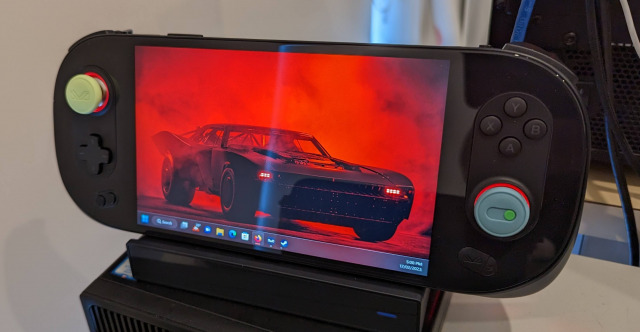
At an external 1440p, it's not going to replace your desktop gaming rig but I'm still impressed by what it can do. My use-case for the Ayaneo connected to an external monitor is to game with my wife & kids. My big desktop PC sits in my home-office (which is located outside of the house), my wife's and kids' PCs however are all together in the one room inside the house. With a monitor and the Ayaneo docked I now have a gaming PC in the house and can join everyone. It's not going to set your world on fire with AAA titles but rather impressively at 1440p, Minecraft or Borderlands 2 run natively and don't break a sweat. Simpler puzzle games like Shapez barely require more than idle power and anything really hefty can just run on my larger desktop and stream to the Ayaneo. At this point it makes for a near-perfect "game where you are" setup. 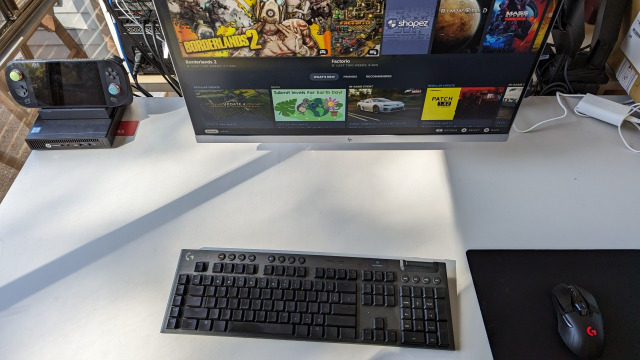
On the topic of "gaming where I am", the Ayaneo has become my travel companion. It's now part of my regular (or whatever regular means in a primarily WFH world) commute via public transport. 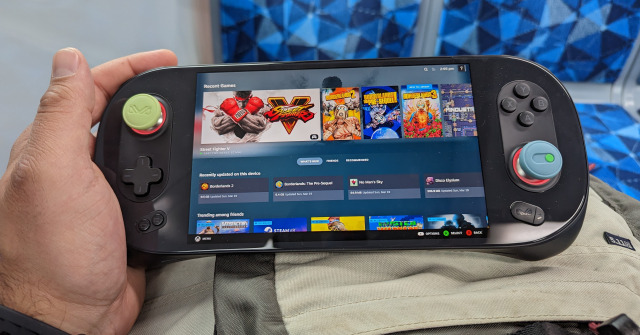
Likewise it makes for a great solution for entertainment when flying. 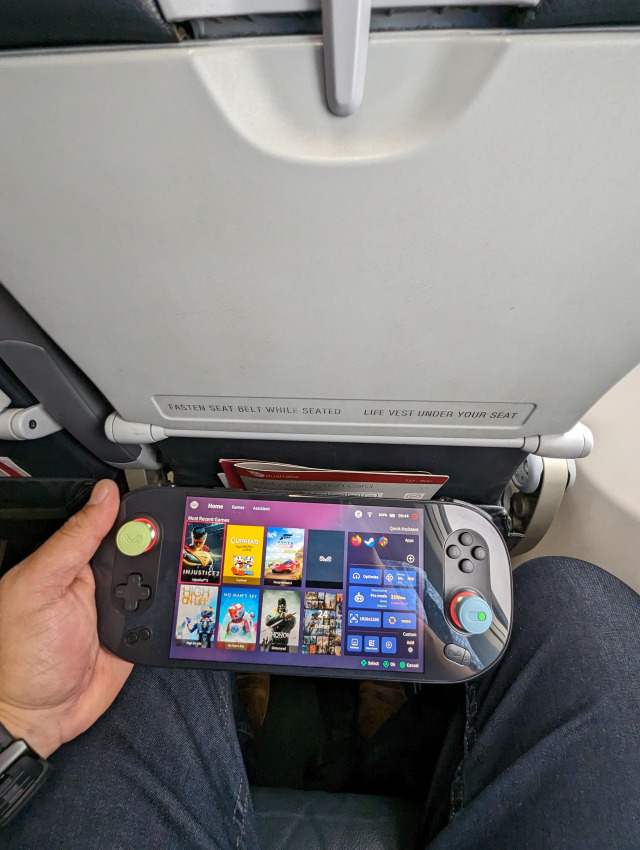
The great thing about all of this is that with GaN (Gallium nitride) chargers becoming mainstream and quite affordable I'm able to keep carrying around the phone charger I was already carrying previously and use it to top-up the Ayaneo once I reach the destination I'm commuting to. 
It's not going to replace your desktop PC for serious gaming or your laptop for mobile productivity, but if you're like me and find yourself so overwhelmingly busy that a little bit of gaming feels like an aspirational idea rather than something easily within your grasp, then this new form factor opened up by the likes of the SteamDesk, the Ayaneo and many others really is a game changer. (pun intended)